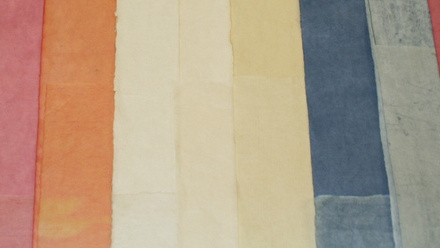- Write up projects as articles for publication and abstracts / conference presentations to submit in future
- Sort and edit your photos and share them with Icon to reach new audiences.
- Learn a craft or new technique. For example, needle felting is great for creating fills for bald taxidermy items. There are several fun kits to facilitate learning, not to mention the vast library of youtube videos.
- Spend time online learning about accessibility and diversity to ensure your writing and overall practice is accessible & inclusive. Some suggested websites to get you started: Perkins School for the Blind ELearning, Museums Association Workforce Diversity, Arts Council Creative Case for Diversity, Sustainability in Conservation, Museums Association Valuing Diversity, Museums and the Art of Sustainability
- Make videos, write blogs and record podcasts and share them online. Make sure videos have subtitles and recordings have transcripts.
- Create content for your personal or organisational website. Need inspiration? Research what kind of content other conservators and museums are publishing and consider what would work for you. Don't forget to fill out your upgraded listing on the Icon Conservation Register!
- Review and update policies, COSHH & risk assessments in line with current legislation & ethical practice.
- List anything you know of in your lab/ workplace/ personal kit that you don’t use and could share with other conservators. You could make a real difference to someone else's work.
- Read. How many of us actually make time to read our journals and professional books to stay up to date? Don’t forget to look beyond the field too - here are a couple of non-conservation books that I have enjoyed with good transferable knowledge: Managing Previously Unmanaged collections by Angela Kipp, Museum Activism by Robert R Janes & Richard Sandwell. Remember to share your book recommendations with others.
- Network! Yes, networking is possible even in self-isolation and during social distancing measures. Take the opportunity to reach out to that senior conservator who inspired you, catch up with students you supported in the past, arrange future visits or work shadowing with other conservators, connect with someone who has the same interests as you or is from a different field. All of this can be done through social media platforms like LinkedIn, Twitter, Pinterest, Instagram, Facebook etc. You could even go the old fashion route of snail mail and write a letter!
- Think about £££. Have you declared your professional membership costs against your tax? If not take the time to do so now. Sort out any receipts you need to claim back. Freelancers get on top of your accounting or prepare for your tax returns. Chase up any unpaid invoices. Research grants you could apply for for projects or to support your CPD.
- Create or update CPD records. Go through your diaries for the last 2 years and track any CPD activities you have done. Do a swot analysis and identify any gaps you might have. Assess whether you can fill any of these with online learning or plan training you would like to do when things are back to normal. If you are in the process of preparing for Icon Accreditation, write up as much as you can.
- Think about the sustainability of your practice. Research and list things you could change that would lower your environmental impact. Did you know sable brushes are made of animals that are farmed in horrible conditions? Use this time to test out alternative brushes to find an alternative. No recycling bin in your lab/ workshop/ studio? Order or request one for when you return. Many sheet plastics companies will accept bubble wrap and plastazote off-cuts to recycle – find your local one and ask if they will take your waste. Order more environmentally sustainable materials in small quantities and test them at home, checking results are suitable for you to use. Consider where you use plastics and check whether there are alternatives. Review your suppliers list – could you use more local suppliers or arrange to bulk order with other conservators in your region?
- Conserve your home! Mend those things at home you never get round to because you spend your days fixing things at work.
- Enjoy the opportunity to re-evaluate how you work. Are there changes you would like to make? Is your practice sustainable and inclusive enough? Do you love your job? Should you target new clients? Does your CV or portfolio need updating? Where do you want to be in 1 year, 5 years, 10 years?
Bonus activity: Do some art or create something – relaxation is important during stressful times. Creative activities can calm anxiety making it easier to focus on working from home and at the same time be beneficial to keeping your hand skills up to date. In need of an art project? Draw or paint your favourite conservation tool and share your artwork online!
I hope this has motivated you and given you some ideas on filling your time at home!
If you feel inspired to do any of the above let us know - tag me on Twitter @MuseumPierrette (I’m happy to receive personal messages if anyone wants to network) and remember to tag @ConservatorsUK. Use the hashtag #ConservatorsAtHome to join the conversation.
Author: Pierrette Squires MSc MA BSc ACR
Pierrete is an Icon Trustee and an Icon Accredited Member. She is also a Team Leader at Bolton Museum.




